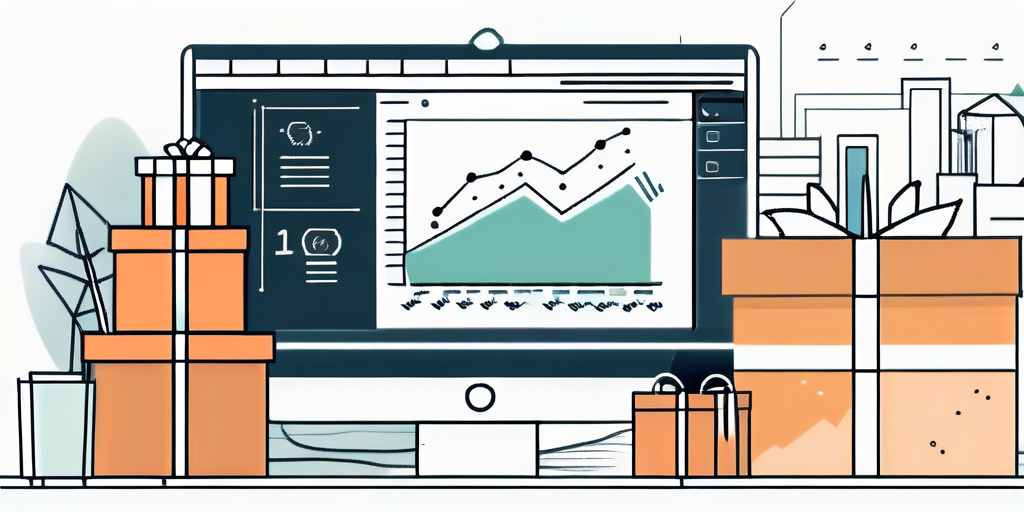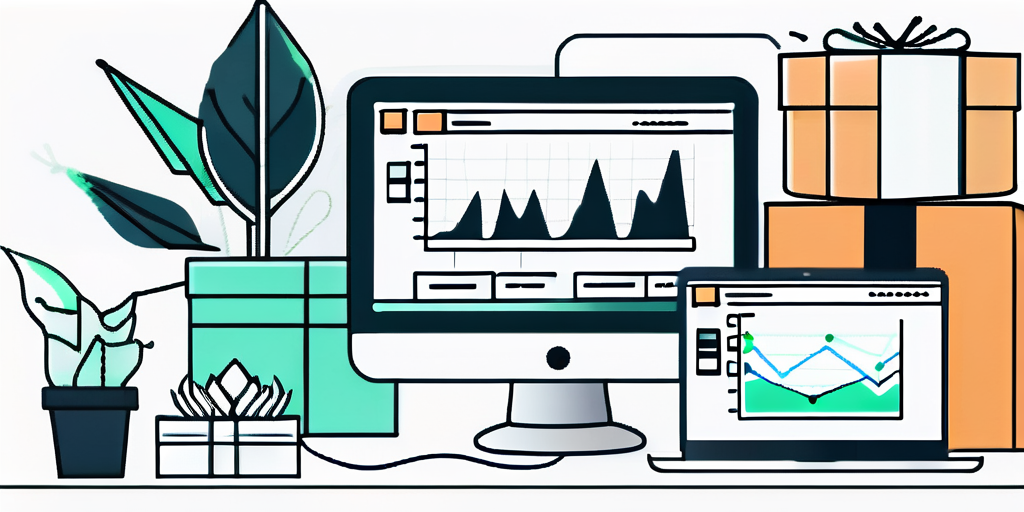Dropshipping is a popular business model that allows entrepreneurs to run an e-commerce store without worrying about inventory or shipping. One platform that has gained significant popularity in the dropshipping community is Etsy. In this ultimate guide, we will explore the ins and outs of Etsy dropshipping and how it can boost your e-commerce success.
Understanding Etsy Dropshipping
What is Etsy Dropshipping?
Etsy dropshipping involves selling products from third-party suppliers on the Etsy platform. Instead of stocking and shipping products yourself, you collaborate with suppliers who handle inventory and fulfillment. This allows you to focus on marketing and customer service, making it an attractive option for aspiring e-commerce entrepreneurs.

Benefits of Etsy Dropshipping
There are several advantages to choosing Etsy dropshipping. First and foremost, you have access to a vast marketplace with millions of potential buyers. Etsy’s niche focus on handmade, vintage, and unique products draws in a specific target audience that appreciates craftsmanship and individuality.
Furthermore, dropshipping eliminates the need for upfront investment in inventory, making it a low-risk business opportunity. You only pay for the products you sell, allowing you to test different products and niches without committing to large quantities.
Moreover, by leveraging the existing infrastructure of Etsy, you can take advantage of its established reputation and credibility. This can help build trust with customers, as they are more likely to feel confident purchasing from a well-known platform.
Lastly, Etsy provides a user-friendly platform with built-in tools for managing listings, orders, and communication with customers. It simplifies the process of running an online store, especially for beginners.
How Does Etsy Dropshipping Work?
When you set up your Etsy dropshipping business, you start by selecting a niche or product category to focus on. It’s essential to choose products that align with the interests and preferences of Etsy’s target audience. Consider market demand, competition, and profit potential when making your selection.
Next, you need to find reliable suppliers who can fulfill orders on your behalf. Look for suppliers with a track record of quality products, fast shipping, and excellent customer service. Communicate with potential suppliers to establish a partnership and understand their dropshipping policies.
Once you have chosen your products and suppliers, it’s time to create an attractive Etsy store. Pay attention to branding, product photography, and compelling product descriptions. Stand out from the competition by highlighting the unique selling points of your products and offering exceptional customer service.
Additionally, it’s important to continuously monitor and analyze your store’s performance. Keep track of sales, customer feedback, and market trends. This data can help you make informed decisions about which products to promote, how to optimize your listings, and how to improve your overall business strategy.
Furthermore, consider implementing marketing strategies to drive traffic to your Etsy store. Utilize social media platforms, collaborate with influencers, and explore advertising options to increase your visibility and attract potential customers.
Remember, success in Etsy dropshipping requires dedication, adaptability, and a commitment to providing a seamless shopping experience for your customers. By staying informed about industry trends and continuously refining your approach, you can maximize your chances of building a thriving business on the Etsy platform.
Setting Up Your Etsy Dropshipping Business
Choosing the Right Products
Choosing the right products is a crucial step in establishing a successful Etsy dropshipping business. Conducting thorough market research is essential to identify trending products and untapped niches. Take the time to analyze factors such as competition, profit margins, and the overall demand for the product.

However, it’s not just about finding popular items; it’s about finding the perfect balance between popularity and uniqueness. Etsy customers have a passion for one-of-a-kind items, so strive to offer products that align with this desire. Consider sourcing products that are handmade, vintage, or customized, as these tend to resonate well with the Etsy community.
Furthermore, don’t underestimate the importance of quality. While uniqueness is key, customers also expect high-quality products. Ensure that the suppliers you choose can deliver products that meet the standards and expectations of your customers.
Finding Reliable Suppliers
The success of your Etsy dropshipping business heavily relies on finding reliable suppliers who can consistently meet customer expectations. It’s crucial to partner with suppliers who have a proven track record of fulfilling orders promptly, maintaining product quality, and addressing customer concerns efficiently.
Start your search for suppliers on platforms like AliExpress, Spocket, or Oberlo. These platforms provide a wide range of suppliers and allow you to read reviews and ratings from other dropshipping entrepreneurs. This insight can give you a good idea of the reliability and reputation of potential suppliers.
When reaching out to potential suppliers, don’t hesitate to ask questions about their dropshipping policies, shipping times, and return processes. It’s also beneficial to request samples if possible. This will allow you to assess the quality of the products firsthand and ensure they meet your customers’ expectations.
Creating an Attractive Etsy Store
An aesthetically pleasing and well-organized Etsy store can significantly impact your sales and customer engagement. Take the time to invest in branding your store and creating a cohesive look and feel that resonates with your target audience.
Start by choosing a visually appealing store banner, logo, and color scheme that reflect the essence of your products. These visual elements will help create a memorable and recognizable brand identity for your Etsy store.
When it comes to product listings, high-quality product photos are crucial. Utilize professional images that showcase your products from different angles and highlight their unique features. Remember, customers rely on these images to make purchasing decisions, so make sure they accurately represent the product’s appearance and quality.
In addition to captivating visuals, craft compelling product descriptions that effectively convey the value and benefits of each item. Use descriptive language to paint a vivid picture of how the product can enhance the customer’s life or solve a problem they may have.
Lastly, don’t forget to optimize your store’s SEO. Incorporate relevant keywords in your titles, descriptions, and tags to help your products appear in search results. This will increase your store’s visibility and attract organic traffic from potential customers who are actively searching for products like yours.
Mastering Etsy SEO
Importance of SEO in Etsy
Search Engine Optimization (SEO) plays a crucial role in boosting the visibility and discoverability of your Etsy store. By optimizing your Etsy listings with relevant keywords and implementing effective SEO strategies, you can increase your chances of appearing in search results and attracting potential buyers.

Keyword Research for Etsy
Keyword research is the foundation of effective Etsy SEO. Start by brainstorming a list of keywords related to your products and niche. Use keyword research tools like Google Keyword Planner, Moz Keyword Explorer, or Etsy’s own search bar to refine your list and identify high-volume, low-competition keywords.
For example, if you sell handmade jewelry, you might start with broad keywords like “handmade jewelry” or “unique jewelry.” As you delve deeper, you may discover more specific keywords like “sterling silver earrings” or “boho necklaces.” These specific keywords can help you target a more niche audience and stand out from the competition.
When incorporating keywords into your listings, ensure they naturally flow within sentences and descriptions. Avoid keyword stuffing, as it can harm your store’s visibility and reputation.
Optimizing Your Etsy Listings
To optimize your Etsy listings, make sure to include relevant keywords in your titles, product descriptions, tags, and attributes. Craft concise and compelling meta descriptions that entice users to click on your listing in search results.
When writing your product descriptions, go beyond just listing the features. Tell a story about your product, its inspiration, and how it can enhance the buyer’s life. This not only helps with SEO but also creates an emotional connection with potential customers.
Additionally, take advantage of Etsy’s listing attributes, such as color, size, materials, and occasion. Providing detailed and accurate information helps potential buyers find precisely what they’re looking for and builds trust in your store.
Regularly monitor your listing performance and make adjustments as needed. Experiment with different keywords, images, and descriptions to find the optimal combination that drives sales and conversions.
Remember, SEO is an ongoing process. Stay up-to-date with the latest trends and algorithm changes to ensure your Etsy store remains visible and competitive in the ever-evolving online marketplace.
Marketing Your Etsy Dropshipping Store
Social Media Marketing Strategies
Social media platforms offer a wealth of marketing opportunities for Etsy dropshipping store owners. Create engaging and shareable content that showcases your products’ uniqueness. Use platforms like Instagram, Pinterest, and Facebook to build brand awareness, engage with your target audience, and drive traffic to your Etsy store.
Collaborate with influencers and bloggers in your niche to expand your reach and tap into their established audiences. Run contests, giveaways, and promotions to encourage user-generated content and incentivize word-of-mouth marketing.
Email Marketing for Your Etsy Store
Building an email list of interested prospects and existing customers is a valuable asset for your Etsy dropshipping business. Offer a lead magnet, such as a discount or exclusive content, to encourage visitors to sign up for your newsletter.
Segment your email list based on customer preferences, purchase history, and engagement levels. Send personalized product recommendations, exclusive offers, and updates to nurture your relationship with subscribers and drive repeat sales.
Utilizing Etsy Ads
Etsy offers an advertising platform that allows sellers to promote their listings and reach a wider audience. Utilize Etsy Ads strategically to increase the visibility of your products and drive targeted traffic to your store.
Experiment with different ad formats, targeting options, and budget allocation to find the optimal advertising strategy for your Etsy dropshipping business. Regularly analyze your ad performance and refine your campaigns to maximize return on investment.
In conclusion, Etsy dropshipping presents an excellent opportunity for e-commerce entrepreneurs to tap into a unique and passionate audience. By understanding the intricacies of Etsy dropshipping, setting up your store effectively, mastering SEO, and implementing strategic marketing tactics, you can boost your e-commerce success and achieve your business goals.

